Maintaining correct tire inflation pressure is very important since it helps optimize tire performance and fuel economy while over-inflated tires are just as problematic as under-inflated ones.
In fact, driving with under-inflated tires is one of the biggest causes of tire failure, according to the National Highway Traffic Safety Administration.
Besides, under-inflated tires can cause many other problems such as wearing out more rapidly, handling poorly and reducing fuel efficiency.
In addition, over-inflated tires are more susceptible to damage from road irregularities, and this also creates a bumpier ride.
Overfilling your tires is just as dangerous as under-filling them, so it’s important you know what is recommended for your vehicle.
This article will give you everything that you need know about your recommended tire pressure. These include:
Buy Pressure Gauge at Amazon
Recommended tire pressure, where to find it?Since tire pressure is so important to your safety and your car’s overall performance, it is important to know which level of tire pressure is right for your vehicle.
In fact, how much air pressure your tires need depends on several factors, including the type of vehicle, the type of tire and the intended use of the vehicle etc.
Air pressure in tires is measured in pounds per square inch or PSI. You can find your tire pressure both inside your car and on the sidewall of the tire.
How to find recommended tire pressure inside your carYou could find the manufacturer’s optimum or recommended tire pressure for your car on a sticker in the door jam, or in your owner’s manual. Some car models even place the stickers on the trunk lid, in the console or on the fuel door. For best results, look for a placard on the inside of the driver’s door, like the example in the photo below.
How to find maximum tire pressure on the sidewall of your tiresSomewhere on the sidewall of your tire, just below the big, bold letters of the manufacturer, for example, you might have noticed the words ‘Max.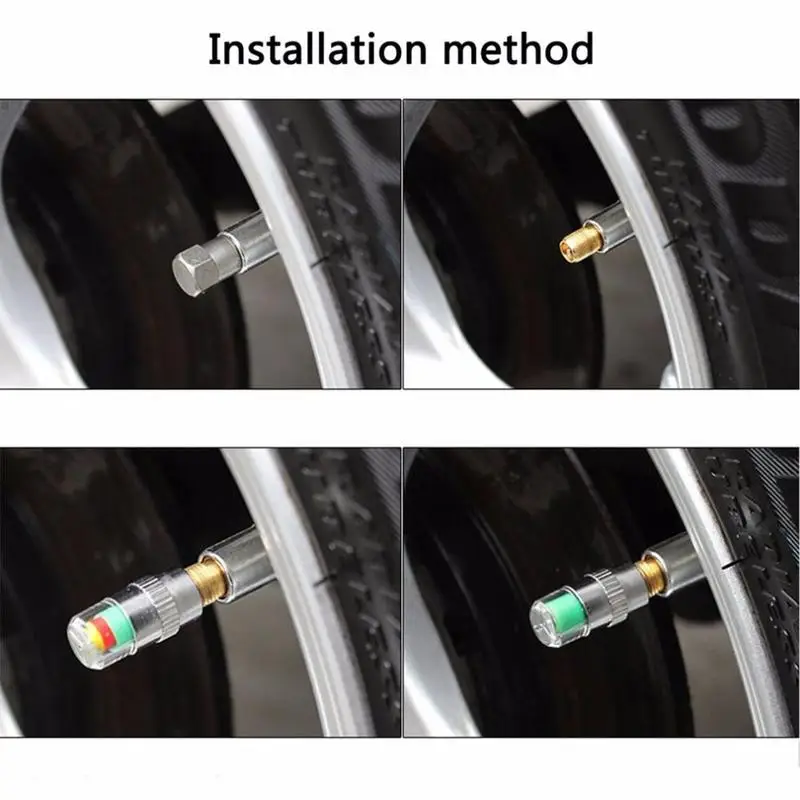 Press. 35 PSI.’ (pounds per square inch).
Press. 35 PSI.’ (pounds per square inch).
That number tells you the maximum cold pressure needed for your tire to carry its maximum load.
Most typical tires require about 32 to 35 pounds per square inch (PSI) of air, says Rod Tate, owner of highly rated Colony One Auto Center in Stafford, Texas.
Large trucks require much larger tires with PSIs of 50 to 60. Heavy-duty vehicles can go even higher. For example, tire in the picture below requires 41 pounds per square inch of air.
However, the tire’s maximum pressure is NOT necessarily the most suitable pressure for every vehicle upon which the tire can be used (almost all vehicle manufacturers’ recommended tire inflation pressures are less than the tires’ maximum pressure).
You really should follow the recommended pressure printed somewhere inside your car or in the manual rather than the maximum pressure. In the next section, I will explain why.
Buy Pressure Gauge at Amazon
Why is maximum tire pressure not the best?If you insist on inflating your tires to the max PSI, there will be more likely that two things below will happen
Since tires inflated to the max cannot give as much on the sidewall, you might see superior cornering, but it could be at the risk of your braking threshold. One quick corner and your back end could slide out.
One quick corner and your back end could slide out.
When your tires are inflated too much, the rubber rounds out at the top of the tire when you are driving, and the center will quickly wear out. You will also reduce your traction and you could even cause a blowout.
Therefore, maximum pressure is not the best, rather, recommended pressure is. I need to repeat here that the pressure listed on the sidewall is a maximum pressure only, but not a recommended pressure. Instead, you should use the air pressure recommended in the vehicle’s owner’s manual or tire information placard label.
How to check your tires pressure?Therefore, maximum pressure is not the best, rather, recommended pressure is. I need to repeat here that the pressure listed on the sidewall is a maximum pressure only, but not a recommended pressure. Instead, you should use the air pressure recommended in the vehicle’s owner’s manual or tire information placard label.
Instead, you should use the air pressure recommended in the vehicle’s owner’s manual or tire information placard label.
After knowing the most appropriate pressure for your car tires, you should check whether your tires have such pressure. In addition, checking the pressure of your tires regularly is one of the most important – and most often overlooked – regular maintenance that you should do to ensure your safety and quality of your driving. Monitoring the amount of air in your tires will let you know if you have a small leak and can help you avoid an unexpected flat tire.
Frequently checking your PSI becomes even more important in the fall and winter, when outside temperatures drop and weather conditions fluctuate causing your tires to lose air more quickly. Generally speaking, your tire will gain or lose one PSI for every 10-degree change in temperature, which means if you have a sudden drop of 30 degrees, you could lose three PSI overnight. If your tires were already low, this could cause tire damage, steering problems or even a flat tire.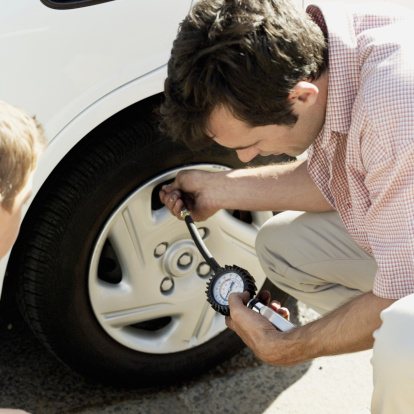
Some experts recommend that you should check the air pressure every time you refuel; others say once a month is sufficient.
How to check tire pressure properly? Checking tire pressure is easy. You can do it right at home or at the gas station. Just be sure you check the pressure when your tires are cold, or have not been driven in several hours. This will give you the most accurate reading.
The most important piece of equipment you need is an accurate tire pressure gauge. You can find battery-operated digital gauges, or more traditional stick-type gauge found at most gas stations. A good gauge should not set you back more than $15 – a worthwhile investment for a longer life for your tires.
Buy Pressure Gauge at Amazon
Make sure you have your manufacturer’s PSI handy when you are checking your tire pressure, and then follow these steps:

By checking tire pressure once a month, you will get a good idea how they are performing. If your tires are fairly new and continue to leak air, you should consult your dealer or mechanic. You may have a faulty valve or other damage that is difficult to detect which could unfortunately result in the need to replace the tires completely. But with proactive maintenance, you could catch an issue before it becomes a problem, and just end up needing a small repair.
But with proactive maintenance, you could catch an issue before it becomes a problem, and just end up needing a small repair.
Often, it is hard to spot an under-inflated tire until it is too late – in other words, it is completely flat. Of course, you could carry a gauge around at all times to measure the pressure, but that is not exactly convenient. Instead, watch for these signs and symptoms of tires that are under-inflated.
When your tires are under-inflated, your ride can be less smooth than usual. You may even find that it takes longer to brake.
When a tire is not inflated properly, it wears down more quickly. If you notice that one or all of your tires are wearing out faster than usual, it may be because they are under-inflated.
Tires that are under-inflated can make your vehicle quiver and shake, which is not a pleasant driving experience. Under-inflation can even cause tires to become misaligned, with comes with it is own variety of problems.
Under-inflation can even cause tires to become misaligned, with comes with it is own variety of problems.
These are all things that you need to know about recommended pressures of your car tires. After reading this article, you will never confuse about the right pressure of your tires and will know how to check it.
Please share your ideas with me if you have other tips for this.
When it comes to driving safety, tire pressure is always one of the hottest topics. Why does tire pressure matter? What the heck is that little annoying symbol on my dashboard? Should I under-inflate my tire during the winter? How often should I check my tire pressure?
We got tons of questions like this from our community, so for today, let's dive deep into the world of tire pressure, put our geeky glasses on and figure out everything you need to know about your tires.
1. What's The Recommended Tire Pressure For My Car?
The recommended tire pressure varies based on the vehicle makes determined by the manufacturer after thousands of tests and calculations.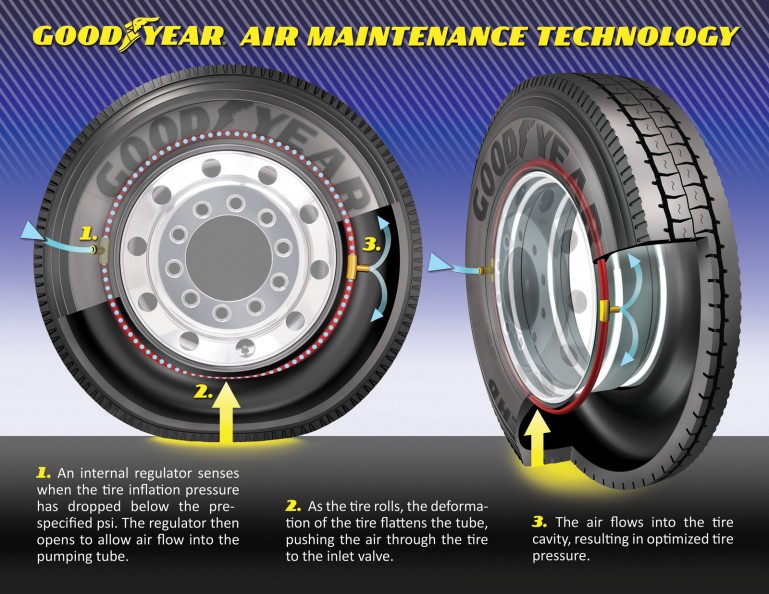 For most vehicles, you can find the ideal tire pressure on the sticker/card inside the driver’s door for newer cars. If there’s no sticker, you can usually find the info in the owner’s manual. Normal tire pressure is usually between 32~40 psi(pounds per square inch) when they are cold. So make sure you check your tire pressure after a long stay and usually, you can do it in the early morning.
For most vehicles, you can find the ideal tire pressure on the sticker/card inside the driver’s door for newer cars. If there’s no sticker, you can usually find the info in the owner’s manual. Normal tire pressure is usually between 32~40 psi(pounds per square inch) when they are cold. So make sure you check your tire pressure after a long stay and usually, you can do it in the early morning.
2. How To Check The Tire Pressure?
After knowing the proper tire pressure of your vehicle recommended by the manufacturer, you should check your tire pressure regularly to make sure that you are in good shape.
You can check your tire pressure in auto part stores, the mechanics, gas stations, and at home. To check tire pressure at home, you need:
As tire pressure changes with the temperature a lot, and recommended tire pressures are cold inflation pressure, you should start with cold tires if possible. We mostly check the tire pressure after one night's rest to avoid the heat from the friction of the last drive, and before the temperature goes up.
We mostly check the tire pressure after one night's rest to avoid the heat from the friction of the last drive, and before the temperature goes up.
Unscrew the valve cap and press the tire gauge onto the valve stem hard enough until the hissing sound disappears. There should be a reading as long as the gauge is well connected to the tire.
You can then note down the tire pressure of each tire, and compare them with the ideal psi you read from inside your driver’s door or in the owner’s manual. Make sure you read in detail, as for some vehicles, front and rear tires have different recommended psi.
If you find a tire underinflated, use the air compressor to fill your tires. You can either buy an air compressor in the auto parts store or use one in a gas station. Remember to rest your tires for at least half an hour to make sure they’re cold and the reading is accurate.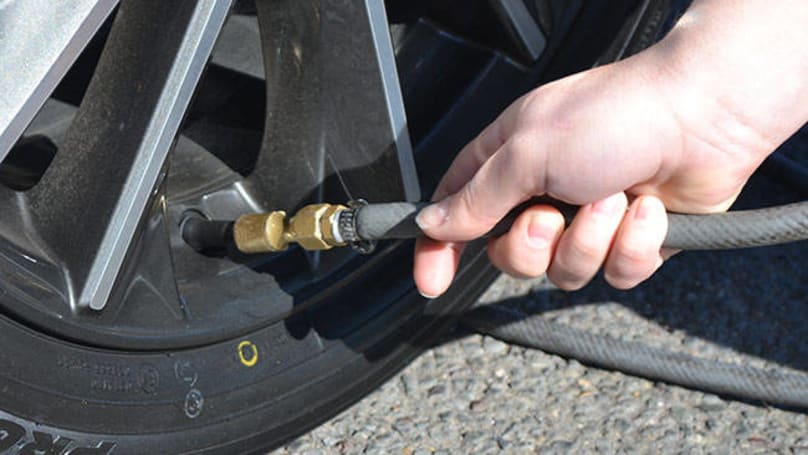 If you have to fill your tires when the tires are hot, inflate them 3~4 psi above the recommended psi, and check again with your gauge when they are cold. It’s ok to overinflate a bit when filling the tires, as you can let the air out with the gauge.
If you have to fill your tires when the tires are hot, inflate them 3~4 psi above the recommended psi, and check again with your gauge when they are cold. It’s ok to overinflate a bit when filling the tires, as you can let the air out with the gauge.
After filling the tires, use your tire pressure gauge to check the tire pressure again and make sure they are in a good range. Let the air out a bit if they are over-inflated by pressing the gauge harder on the valve stem.
3. How To Maintain Proper Tire Inflation?
Tire maintenance is essential for the overall performance of your vehicle, and we highly recommend that you check your tire pressure every time you inflate your tire, each 10°F (5.6 °C) temperature change, and every 30 days.
Be mindful that don’t wait until the TPMS(Tire Pressure Monitoring System) light come on before you check the tire pressure, as the normal TPMS may:
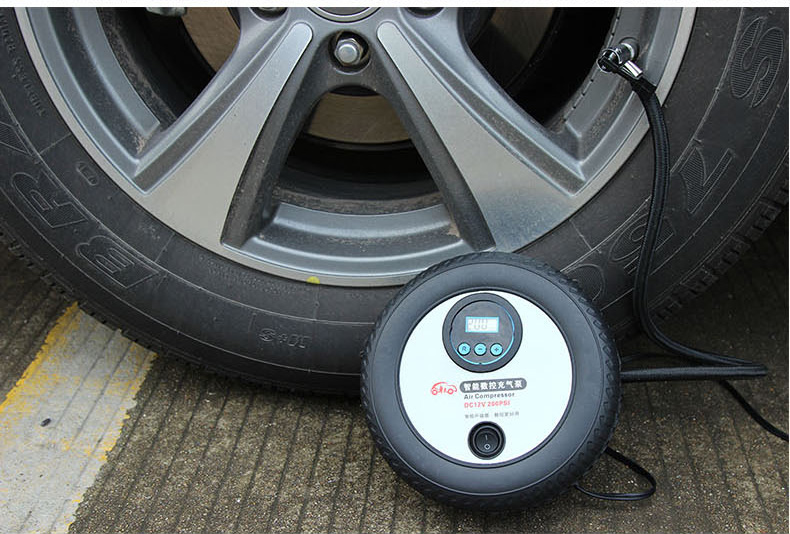 ..
..For more information about the tire pressure monitoring system, please check our post about TPMS: What is TPMS and Why Does it Matter?
Thus, we highly recommend that you check your tire pressure regularly, especially before a long drive or heavy load driving. Also, temperature affects the tire pressure a lot, and we will explain it in the next section.
4. How Does Temperature Affect Tire Pressure?
First of all, the rule of thumb is for each 10°F (5.6 °C) decrease in temperature, the tire pressure will drop by one psi for most passenger vehicles. When it comes to commercial truck tires, which are often inflated to over 80 psi (twice as much as a passenger vehicle tires), the change of tire pressure according to temperature is doubled to 2 psi for every 10°F.
For the non-nerdy readers, just remember this rule of thumb and keep in mind that you will need to monitor your tire pressure during different seasons or a sudden temperature change.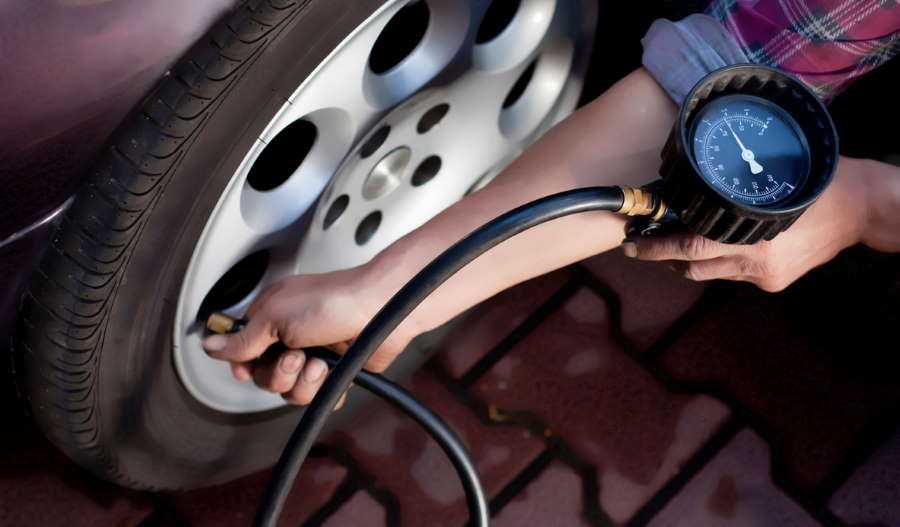 For those who want a deeper dive into how psi's are determined, here's the science behind it.
For those who want a deeper dive into how psi's are determined, here's the science behind it.
The equation we use to calculate the relationship between tire pressure and the temperature is called the Ideal Gas Law. It is a good approximation of the behavior of many gases under many conditions. (Appx1) It works well for most low-pressure gases. When applied to tire pressure calculation, the error is less than 1%.
First, we take the Ideal Gas Law equation and apply it to our circumstance:
where,
P = absolute pressure
V = gas volume in the tire
n = the number of molecules of gas in the tire
R = universal gas constant
T = temperature
Since we are trying to examine the pressure change according to the temperature, let's assume two tire pressures P1 & P2 at their set temperatures T1 & T2.
Given the n and R are both constants, and the gas volume in the tire is also a constant, we can take those constants out of the equation, and suddenly we get this straightforward one:
Let's say the temperature drops from 100°F to 50°F, the tire pressure at 100°F is 35 psi, so what's the tire pressure now at 50°F?
(the metric system is getting in the way, huh?)
Absolute Pressure = tire pressure + sea level air pressure (14.7 psi). So,
Put all that into the equation,
So a 50°F drop in temperature lowers the air pressure by 4.5 psi, which is pretty much the same according to our rule of thumb.
5. How Does Tire Pressure Affect Driving
Both overinflation and underinflation affect your tire performance a lot, and serious problems might occur. According to NHTSA(National Highway Traffic Safety Administration), driving on underinflated tires increases a driver's chance of being in a serious accident by 300%.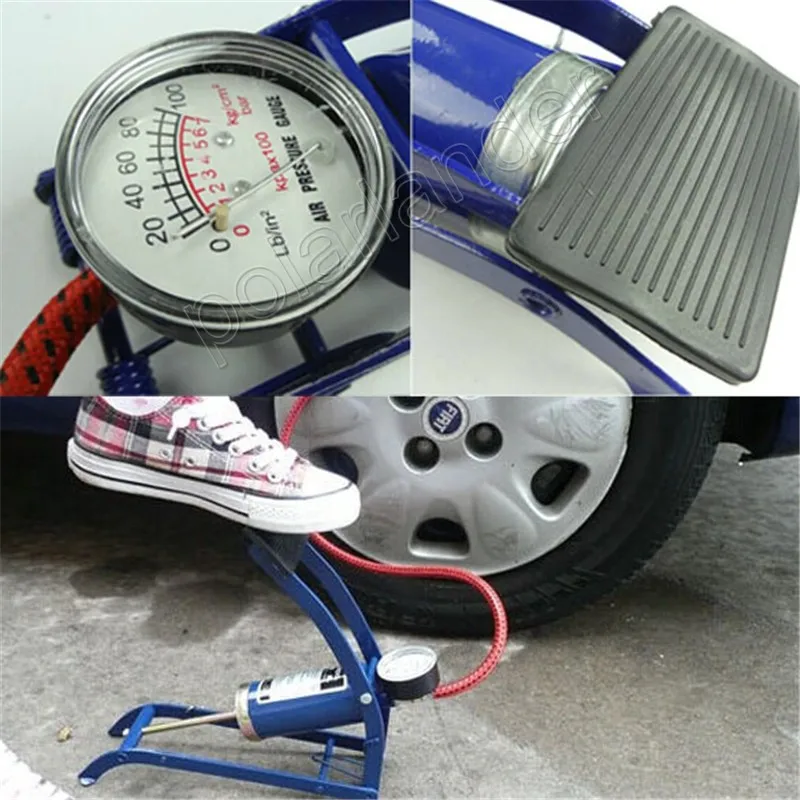 So how will a bad tire pressure affect driving safety? We will explain in detail below.
So how will a bad tire pressure affect driving safety? We will explain in detail below.
The grip is mostly associated with the size of the contact patch between the tire and the road. An over-inflated tire radically decreases the contact patch while an under-inflated tire does the opposite.
A larger contact patch gives you more grip, and this is the exact reason why lots of racers will intentionally decrease their tire pressures to create a larger contact patch on a dry race track.
However, despite the fact that an under-inflated tire will cause more fuel consumption and improper tear and wear of the tires, for most daily commuters, it might cause an even scarier problem, which is hydroplaning.
Hydroplaning is a hazardous event when a layer of water builds between the wheels and the road surface, leading to a loss of traction that prevents the vehicle from responding to control inputs. (Appx2)
Hydroplaning occurs when the pressure of the tire pushing on the ground is equal to the water pushing back up on that tire. The size of the contact patch, given the force or the weight of the tire, is the same, directly affects the average pressure the tire's putting down on the road. The larger the contact patch (by deflating the tires), the less pressure it puts on that same area. So there's a causal relationship between your tire pressure and the possibility of a hydroplaning event.
The size of the contact patch, given the force or the weight of the tire, is the same, directly affects the average pressure the tire's putting down on the road. The larger the contact patch (by deflating the tires), the less pressure it puts on that same area. So there's a causal relationship between your tire pressure and the possibility of a hydroplaning event.
Here's a more visual explanation of what is happening between a properly-inflated tire and an underinflated tire when driving on a wet road.
To avoid a hydroplaning event, ALWAYS inflate your tires properly. Also, check your tires' treads, which make the water flow around the tires more efficiently, and of course, driving slow is always a big plus.
How tire pressure affects tire wearThe contact patch directly decides the pattern of the tire's wear and tear. You don't want your tires to wear out prematurely just because you have an over or under-inflated tire.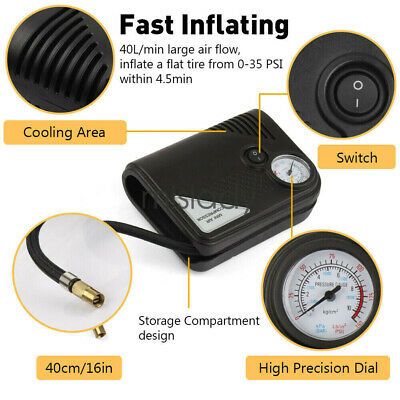
Imagine you are a ball rolling on the ice, there's no friction between the two surfaces, how much extra force do you need to apply to keep the ball moving? Zero (Thanks, Newton). The same applies to your fuel consumption when it comes to driving on the road. The rolling resistance between your tires and the road significantly affects fuel economy, and by now we should all know the logic behind this, lower tire pressure leads to a larger contact patch, which causes higher rolling resistance, and thus, poor fuel economy.
A Michelin study showed that your tire is accountable for at least 1/5 of your total fuel consumption and a 1-bar of pressure drop (14.5 psi) would increase your fuel consumption by 3-5%.
6. Special Conditions For Tire Pressure Manipulation
There are of course circumstances where you want to manipulate your tire pressure to meet specific requirements. Like the aforementioned track race, or if you are driving on sand, mud, etc. However, as a daily commuter, we strongly suggest you regularly check your tire pressure, preferably once a week and anytime you might take a long road trip, and always keep the tires properly inflated!
Like the aforementioned track race, or if you are driving on sand, mud, etc. However, as a daily commuter, we strongly suggest you regularly check your tire pressure, preferably once a week and anytime you might take a long road trip, and always keep the tires properly inflated!
Conclusion
Tire pressure is always a hot topic regarding driving safety, and it's important to keep an eye on the tire pressure to maximize fuel efficiency and safety.
Before you go
We'd like to offer you our most popular ZUS Smart Vehicle Health Monitor for FREE to better take care of your car and save $$$ on car expenses. Claim your free unit here.
Top Posts from nonda:
What is a Car Diagnostic Test & How to DIY?
What Does Check Engine Light Mean & How to Fix it?
Best OBD2 Scanner & Code Reader: Complete Buying Guide
OBD2 Codes: What You Need to Know
Appendix 1 - Ideal gas law - Wikipedia.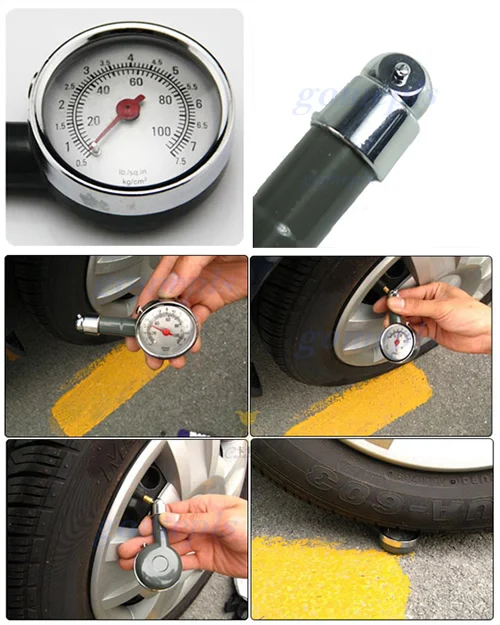
Appendix 2 - Aquaplaning - Wikipedia.
compressor that I have been using for the last 2 years. When a car enthusiast uses different devices, you involuntarily begin to compare them in terms of ease of use. The first compressor that went with me for insurance and to fulfill my direct duties was a simple "rootless" from a little-known brand and was quite inexpensive. No, it didn't break, it was just not mine, but personally "mine" - I got the Daewoo DW40L as a gift about six months ago. Of course, it turned out to be "cooler" in terms of "bells and whistles", but I won't say that this makes the device itself work worse or better.
Supplied / sold in a cardboard box, which contains technical specifications and other primary information, while inside there is the device itself + instruction manual and warranty card (we have not filled it out by the seller).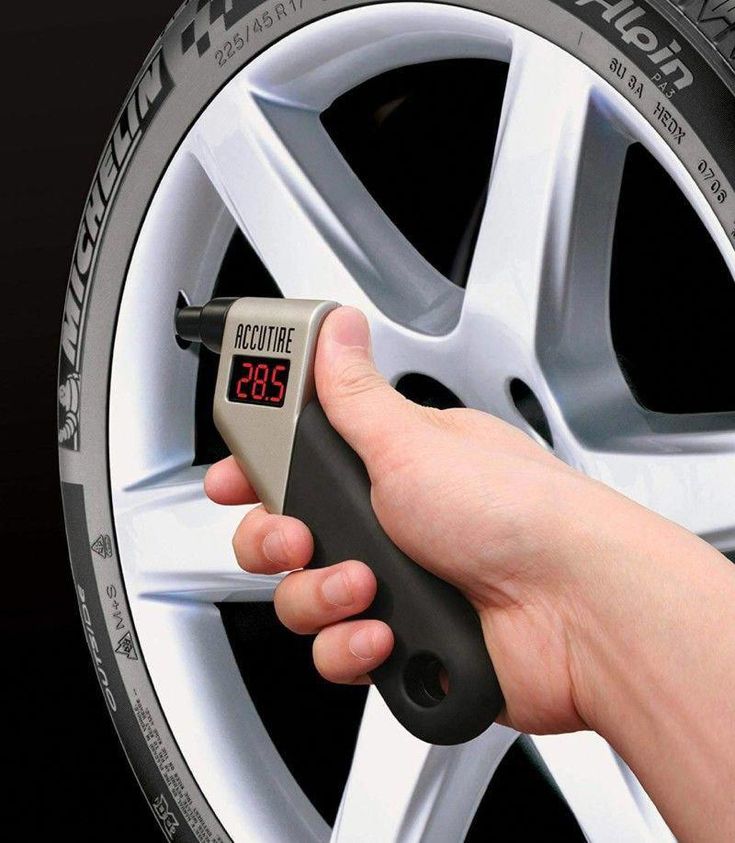 The total warranty period is 3 years.
The total warranty period is 3 years.
When studying the instructions, please note that this model is DW40L, since the instruction is general - for two models.
Let's see the technical characteristics of this model:
Also, I would like to draw your attention to the fact that the new compressor in the box is covered with a protective film.
It is advised to use the device with the engine running to avoid battery discharge. Of course, this is especially true in the cold season and / or on old batteries (they are considered new for up to 2 years, while the warranty is valid for them). First of all, before the first use, you need to "switch" from the unit of measurement "PSI" (pound per square inch) to "BAR" (bar) - see instructions. There shouldn't be any more "jumps".
Here, in fact, is the device itself, which we will use until it fails in case of natural wear and tear (I hope not earlier).
On the reverse side (bottom) it does not have any legs / stands, therefore, in fact, there is nowhere to put it (it is not recommended to put it on wet and damp earth / asphalt, as well as use it in wet and damp conditions). Stop ... not everyone has a garage to inflate tires in suitable conditions, and no one canceled autumn / spring in our country, so you have to use a compressor in different weather conditions. I advise you to purchase a mat and a case for storing the device, because. Neither of these are included in the kit. What is the cover for? If you carry everything in the luggage compartment, then at least it should lie somewhere, and not “ride” around the entire perimeter of the trunk (in a box / basket is an option, but plastic will rub against plastic when driving, and the body will quickly become scratched , so a rag or other soft cover will not be superfluous). I drive the compressor under the seat, I think that it’s faster to get to it in case of urgent need, and the temperature in the car’s cabin is higher than in the trunk, which is important in the winter season (yes, the compressor also has parts, which may be susceptible to corrosion).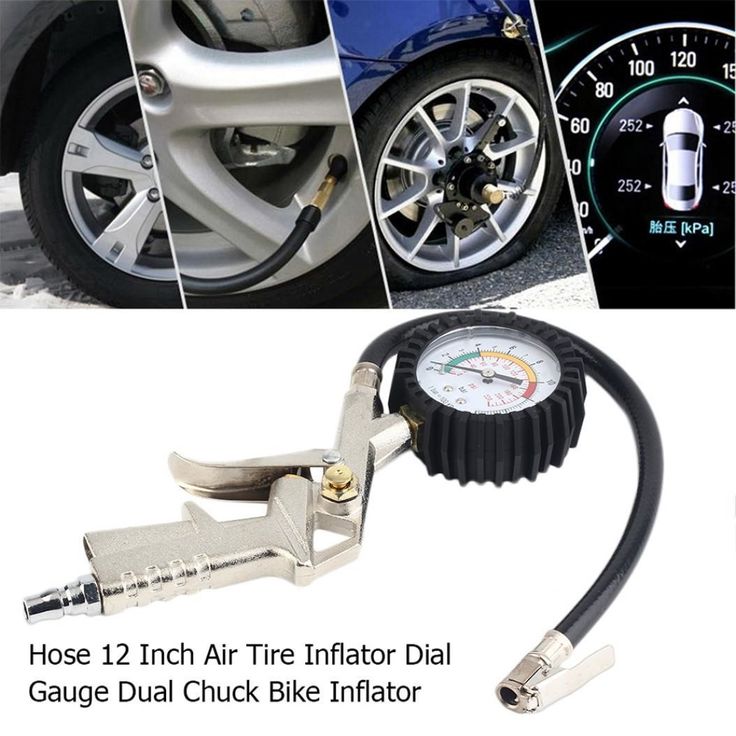
Does the manufacturer put emphasis on a comfortable carrying handle? I will not hide, it is comfortable and with a rubber coating, but there is a nuance here. About it a little later, but I have no complaints about its implementation and placement.
This model also boasts a powerful LED flashlight. Cool? in the evening or in the garage where the lighting is low, yes. And in daylight, there is no need for it. This is me to the fact that there is NO way to turn off the backlight, tk. when the plug is connected to the cigarette lighter socket (to the mains), the lamp lights up automatically (by default). Of course, this is not annoying, but each flashlight has its own resource of work and I believe that it would be possible to provide an on / off button for the backlight.
This is how the compressor will approximately be located during operation.
Can you tell me where the lamp shines? That's right, in the opposite direction from the wheel that needs to be pumped up.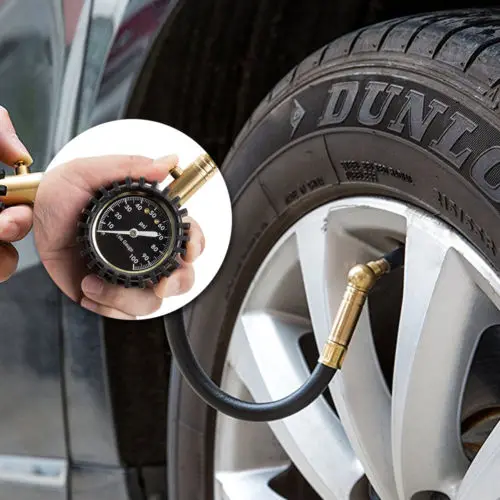 If you turn the device itself in the other direction, then the digital pressure gauge will be back to us, especially since the length of the air hose does not allow it to be "turned and turned" where you want. It remains the option to lay the device horizontally, but for this you will need some kind of rug or pick it up while the bottom is still clean and dry. At the bottom there are ventilation grilles, so it is better not to leave the device in the "lying" position for a long time during operation.
If you turn the device itself in the other direction, then the digital pressure gauge will be back to us, especially since the length of the air hose does not allow it to be "turned and turned" where you want. It remains the option to lay the device horizontally, but for this you will need some kind of rug or pick it up while the bottom is still clean and dry. At the bottom there are ventilation grilles, so it is better not to leave the device in the "lying" position for a long time during operation.
By the way, about care: wipe with a clean, damp cloth or napkin. Since the case of the device is bright / attracting attention, it will get dirty quickly, more precisely, everything becomes noticeable on it right away. Of course, the compressor is not needed for beauty, but keeping it clean and dry is your responsibility and a condition of the guarantee.
Now about the air hose. Its length is 45 cm, but I would not refuse additional cm, though in this case there will be nowhere to wind it.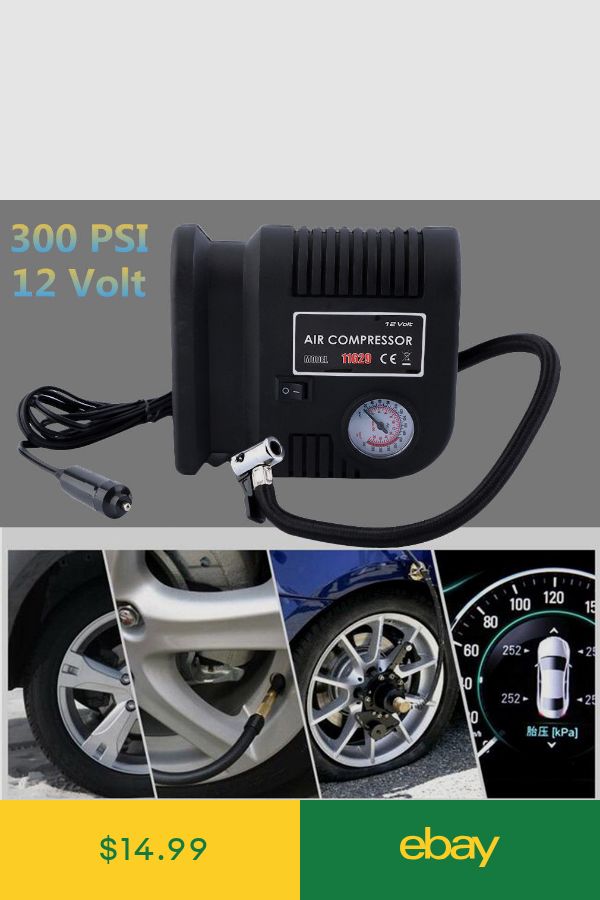 Manufacturers are striving for minimalism / compactness, besides, city cars are becoming "compact" (minicars), so no one has free space. The hose is located along the perimeter of the side housing of our device and at the end, and also fixed in some places so that it does not fly out.
Manufacturers are striving for minimalism / compactness, besides, city cars are becoming "compact" (minicars), so no one has free space. The hose is located along the perimeter of the side housing of our device and at the end, and also fixed in some places so that it does not fly out.
In summer we also inflate bicycle wheels with it (in dry weather).
Also here is a "chip" of this model - a set of nozzles for inflatable products and 4 spare caps for the nipple. Caps, of course, can be bought separately in specialized stores, but when they are available in advance (someone took care of this in advance), then, of course, it is pleasant. "Large" inflatable products, we have, once or twice, and counted, and everything else is trifles that can be pumped up with a hand / foot pump.
Now about the cable - its length is 3.5 m and it fits / should fit under the housing cover in a special compartment. But .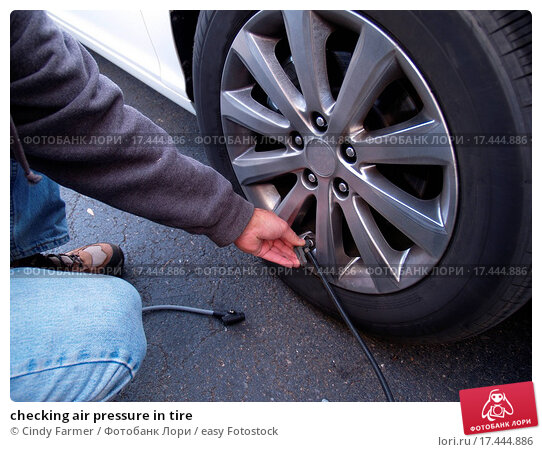 .. after work, I don’t “stuff” it there. Why? Firstly, every time you don’t want to twist the cable and push it there because it is dirty (it lies on the ground or asphalt), and secondly, you also don’t want to bend and clamp it once again. Exit: I close the lid of the device, and wind the cable around the device itself (not tight), and send it all into a bag. That's it, he's not going anywhere from there. By the way, for the cable there is a special notch for the cord, so as not to "clamp" it.
.. after work, I don’t “stuff” it there. Why? Firstly, every time you don’t want to twist the cable and push it there because it is dirty (it lies on the ground or asphalt), and secondly, you also don’t want to bend and clamp it once again. Exit: I close the lid of the device, and wind the cable around the device itself (not tight), and send it all into a bag. That's it, he's not going anywhere from there. By the way, for the cable there is a special notch for the cord, so as not to "clamp" it.
And now back to the carrying handle. Remember, I wrote that there is one nuance? That's precisely because I wind the cable on top of the case, and not "ram" it inside, I don't need a handle (I don't carry it vertically by the handle, but take it in a horizontal position in my hands and put it in a case). Here it is, by the way, the cable in the "placed" and allotted place for it.
And a few more words about the length of the cable. If someone asked you to pump up his wheel (rear one, because you can’t reach the front ones), then you can safely do it from your car.
Now about the removable digital pressure gauge. It runs on 2 LR 44 batteries, so stock up on a spare set of batteries in advance (batteries will be included with purchase). Usually I do not remove the pressure gauge and take measurements stationary, then immediately pump up, if necessary. In addition to it, I also have a simple mechanical pressure gauge, and if you measure the pressure with different devices, they will all show different data (not critical, but maybe important to someone). * This pressure gauge, "Chinese" mechanical and Soviet mechanical, took part in testing.
It is better to measure the pressure with a pressure gauge separately from the compressor, because during "pumping", when the pressure gauge is in its regular place in the device, the pressure will be shown from the air hose (the difference is somewhere around 0.6-0.7 bar). Since the digital pressure gauge is battery powered, it is better to keep it warm ( in the cabin of the car), which is especially important in winter, when the batteries "sit down" very quickly.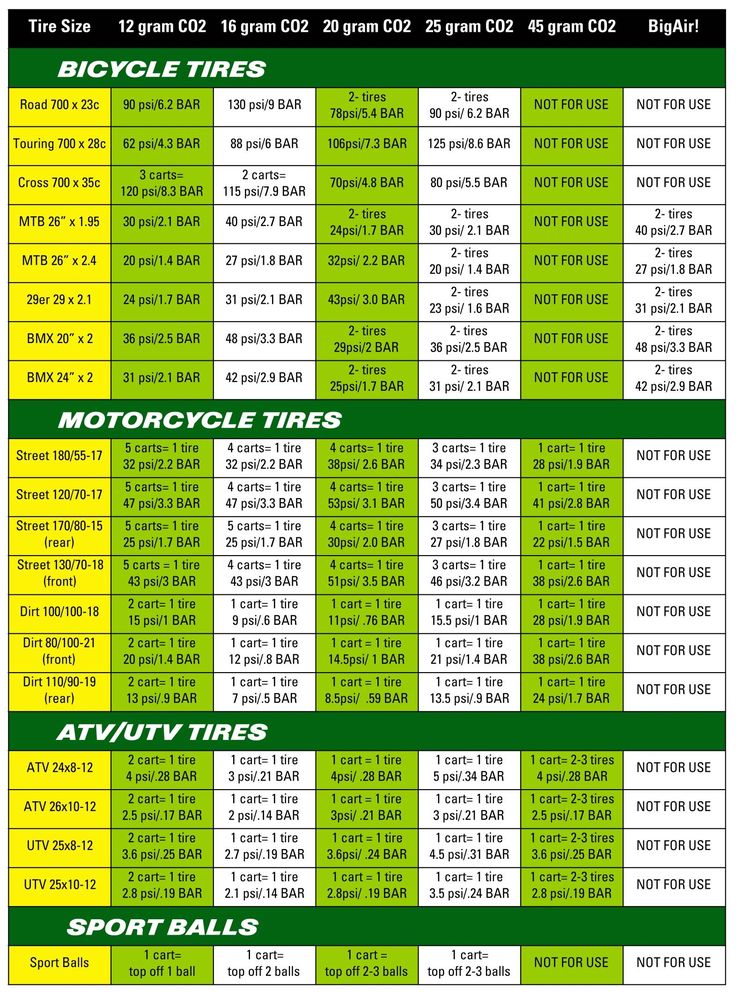
By the way, removing the pressure gauge is not so difficult as it seems at first glance (there is an explanation in the instructions, and in general, it is better not to be too lazy and read it from cover to cover, since this is not so much). Attaches with a locking lever.
I can't help but note the auto-stop function and the automatic shutdown of the pressure gauge (after 15 seconds of "idle"). Set the desired pressure (upper limit) and and the off button. You do not need and will not need to sit nearby and "on duty" when the wheel is inflated. True, I use this function very rarely (most often, when we change winter / summer wheels), and on ordinary “weekdays” I pump up without this function (fortunately, you just need to pump it up a little, because the wheels practically don’t go down). Also, I can’t yet say how long it takes to inflate a full wheel, because I don’t have flat wheels / tires (winter ones on disks, like summer ones, are stored inflated). In the case when a very flat tire will be inflated, it is better to place the compressor vertically so that the ventilation grilles do not close. When, say, you pump up a couple of Bars, or even less, you can also hold the device horizontally.
In the case when a very flat tire will be inflated, it is better to place the compressor vertically so that the ventilation grilles do not close. When, say, you pump up a couple of Bars, or even less, you can also hold the device horizontally.
That's all. I will recommend this suitcase model to those who are faced with the choice of a new or their first compressor, and above all to those who appreciate compactness and relative convenience (carry handle, backlight, all cords and hoses are "hidden" and do not hang out, the pressure gauge is removable ). Some of the nuances that I met during the operation, I described and warned everything in my review.
Good luck to everyone!
View product list Cheapest at the top
0 €
The free shipping promotion is valid from 22.09. to 31.10.2022 until 24:00 on purchases of goods marked with a special icon and on orders over 20 € with delivery to DPD Pickup points and Omniva parcel lockers.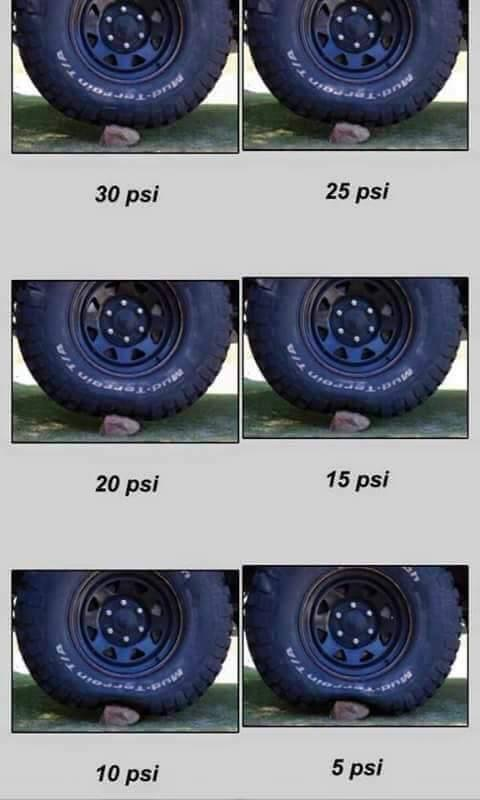 '> DELIVERY PROMOTION
'> DELIVERY PROMOTION
5 89 € / month 44 99 €
Add to cart
4.9/5
PICK UP TOMORROW
Xiaomi Mi 1S electric pump
https://220.lv/ru/t/garantejam-labaku-cenu'> BETTER PRICE
7 99 €
Add to cart
4/5
PICK UP TOMORROW
Dresco mini bike pump 24.5 cm
https://220.lv/ru/t/garantejam-labaku-cenu'> BETTER PRICE
9 99 €
Add to cart
4.9/5
PICK UP TOMORROW
Dresco bicycle pump, floor standing
https://220.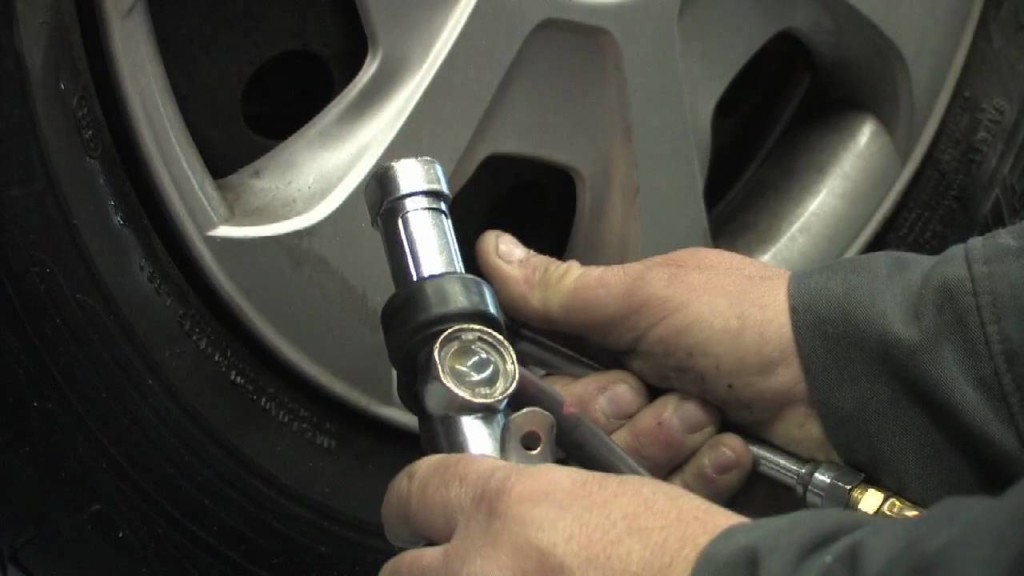 lv/ru/t/garantejam-labaku-cenu'> BETTER PRICE
lv/ru/t/garantejam-labaku-cenu'> BETTER PRICE
2 99 €
Add to cart
4.6/5
PICK UP TOMORROW
Dresco bicycle pump hose 20 cm
https://220.lv/ru/t/garantejam-labaku-cenu'> BETTER PRICE
10 50 €
Add to cart
4/5
PICK UP TOMORROW
Pump with Dunlop pressure gauge
https://220.lv/ru/t/garantejam-labaku-cenu'> BETTER PRICE
5 00 €
Add to cart
PICK UP TOMORROW
Pump Dunlop Mini 73559
0 €
The free delivery promotion is valid from 22. 09until 31.10.2022 until 24:00 for the purchase of goods marked with a special icon and for orders over 20 € with delivery to DPD Pickup points and Omniva parcel lockers. '> DELIVERY PROMOTION
09until 31.10.2022 until 24:00 for the purchase of goods marked with a special icon and for orders over 20 € with delivery to DPD Pickup points and Omniva parcel lockers. '> DELIVERY PROMOTION
5 24 € / month 39 99 €
Add to cart
5/5
PICK UP TOMORROW
Roidmi Electric Tire Pump 7.4V 50W 2600 ...
https://220.lv/ru/t/garantejam-labaku-cenu'> BETTER PRICE
5 98 €
Add to cart
4.5/5
PICK UP TOMORROW
Bicycle pump Author AAP One
https://220.lv/ru/t/garantejam-labaku-cenu'> BETTER PRICE
14 99 €
Add to cart
4. 9/5
9/5
PICK UP TOMORROW
Bicycle pump with pressure gauge Dresco
https://220.lv/ru/t/garantejam-labaku-cenu'> BETTER PRICE
19 99 €
Add to cart
4.9/5
PICK UP TOMORROW
Bicycle pump with pressure gauge Dresco Pro
https://220.lv/ru/t/garantejam-labaku-cenu'> BETTER PRICE
3 00 €
Add to cart
Enero telescopic pump 22 x 230 mm
0 €
The free delivery promotion is valid from 22.09until 31.10.2022 until 24:00 for the purchase of goods marked with a special icon and for orders over 20 € with delivery to DPD Pickup points and Omniva parcel lockers. '> DELIVERY PROMOTION
'> DELIVERY PROMOTION
7 86 € / month 60 00 €
Add to cart
FAST DELIVERY
SKS USP Bicycle Shock Pump
0 €
The free delivery promotion is valid from 22.09until 31.10.2022 until 24:00 for the purchase of goods marked with a special icon and for orders over 20 € with delivery to DPD Pickup points and Omniva parcel lockers. '> DELIVERY PROMOTION
31 90 €
Add to cart
FAST DELIVERY
SKS Injex Control pump
https://220.lv/ru/t/garantejam-labaku-cenu'> BETTER PRICE
3 29 €
Add to cart
3/5
Bicycle hand pump Vorel
https://220. lv/ru/t/garantejam-labaku-cenu'> BETTER PRICE
lv/ru/t/garantejam-labaku-cenu'> BETTER PRICE
2 99 €
Add to cart
3.7/5
Good Bike Skillful Bicycle Pump
https://220.lv/ru/t/garantejam-labaku-cenu'> BETTER PRICE
7 99 €
Add to cart
Good Bike Skillful Bicycle Pump
https://220.lv/ru/t/garantejam-labaku-cenu'> BETTER PRICE
7 99 €
Add to cart
5/5
Good Bike Skillful Bicycle Pump
0 €
The free shipping promotion is valid from 22.09. to 31.10.2022 until 24:00 on purchases of goods marked with a special icon and on orders over 20 € with delivery to DPD Pickup points and Omniva parcel lockers. '> DELIVERY PROMOTION
'> DELIVERY PROMOTION
22 90 €
Add to cart
Good Bike Skillful Bicycle Pump
In winter, bikes usually sit forgotten in garages, but with the onset of warm weather, we take them out more and more often. Like any other item, if the bike is not used for a long time, it can lose its value and become less functional. Before each new season, it is recommended to prepare
Unfortunately, no one is immune from such a nuisance on the road as a flat tire. In addition, it is desirable to pump up the chamber from time to time to maintain the required pressure in it. That's why bike pump is a must for every cyclist. In order not to make a mistake when buying with a choice, you should determine in advance which pump among the existing variety of models will be preferable for your bike. Portable or stationary, hand or foot pump for a bicycle - which one to choose?
Portable or stationary, hand or foot pump for a bicycle - which one to choose?
Most bicycle tubes are fitted with Presta (sport) or Schrader (auto nipple) , nipples Dunlop (bicycles) – standard bicycle nipple. Most bicycle pumps fit any type of nipple, but sometimes a special adapter is required for cheaper models.
Portable bike pumps are light and small enough to be carried around. Stationary, floor models are the most powerful, with their help you can fill the chamber with air the fastest, but such pumps are larger, so they will be ideal for a garage or home.
The power of the pump must also be taken into account when purchasing. So for a road bike, models with a power of up to 160 PSI are suitable, and for mountain and walking bikes - with a power of up to 120 PSI. The range of required working pressure is usually indicated on the tires.
Both hand and foot bicycle pump with pressure gauge - allow you to control the pressure in the chamber directly during its inflation.